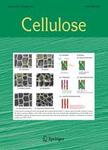版权所有:内蒙古大学图书馆 技术提供:维普资讯• 智图
内蒙古自治区呼和浩特市赛罕区大学西街235号 邮编: 010021

作者机构:Zhejiang Sci Tech Univ Coll Mat & Text Dept Mat Engn Hangzhou 310018 Zhejiang Peoples R China Zhejiang Sci Tech Univ Minist Educ Key Lab Adv Text Mat & Mfg Technol Hangzhou 310018 Zhejiang Peoples R China Wuhan Univ Minist Educ Dept Chem Wuhan 430072 Peoples R China Wuhan Univ Key Lab Biomed Polymers Minist Educ Wuhan 430072 Peoples R China
出 版 物:《CELLULOSE》 (纤维素)
年 卷 期:2017年第24卷第1期
页 面:147-162页
核心收录:
学科分类:081704[工学-应用化学] 07[理学] 08[工学] 0817[工学-化学工程与技术] 0805[工学-材料科学与工程(可授工学、理学学位)] 070303[理学-有机化学] 0703[理学-化学]
基 金:Science Foundation of Zhejiang Sci-Tech University (ZSTU) [15012080-Y] Zhejiang Top Priority Discipline of Textile Science and Engineering [2014YBZX03] Young Researchers Foundation of Key Laboratory of Advanced Textile Materials and Manufacturing Technology, Ministry of Education, Zhejiang Sci-Tech University [2015QN03] Natural Science Foundation of China Scientific Research Foundation for the Returned Overseas Chinese Scholars State Education Ministry [1101603-C]
主 题:Bio-inspired mineralization Cellulose ZnO nanoparticles Nanocomposite film Photocatalysis
摘 要:A bioinspired mineralization route to directly prepare ZnO-cellulose nanocomposite (ZCN) films from a cellulose-NaOH/urea/zincate solution was demonstrated in this study. By adding non-acid coagulants, an inclusion complex consisting of NaOH, urea and zincate, which was bound to the cellulose molecules, was broken. As a result, the cellulose aggregates occurred, which simultaneously aided the mineralization of ZnO nanostructures at room temperature. The structure and properties of the ZCN films were characterized using FE-SEM, TEM, XRD, UV-Vis spectra, XPS, TG, tensile testing and photocatalytic activity tests. Through changing different coagulants, the content and mean size of ZnO in the ZCN films varied in the range of 10.8-14.9 wt% and 56.8-146.8 nm, respectively. Owing to good interfacial interaction, the ZCN films displayed good mechanical and excellent photocatalytic properties. The mechanical strength and elongation at break of the ZCN films attained 46.7 MPa and 6.4 %, respectively. The degradation efficiency of rhodamine B reached 99.3 % within 50 min under UV light and only showed a slight decrease after three cycles. The cellulose-mediated bioinspired approach was expected to introduce a method for preparing functional cellulose-based materials under mild conditions for various niche applications.